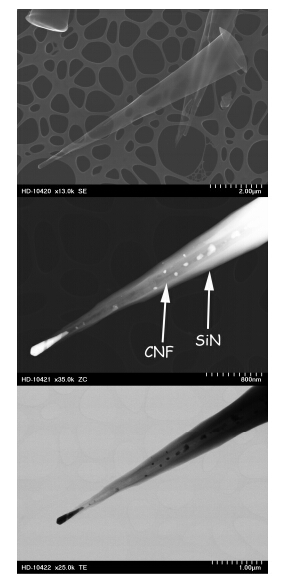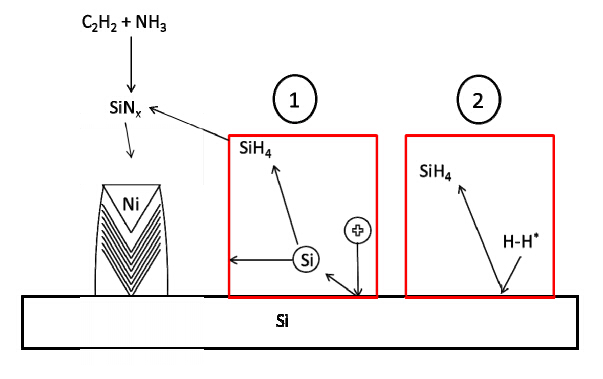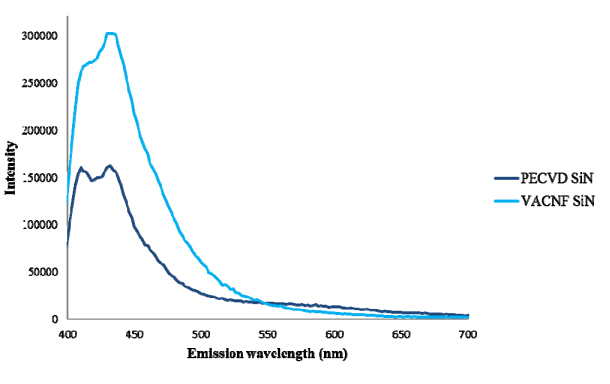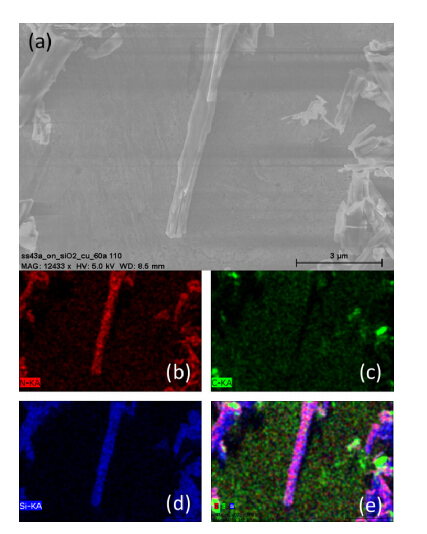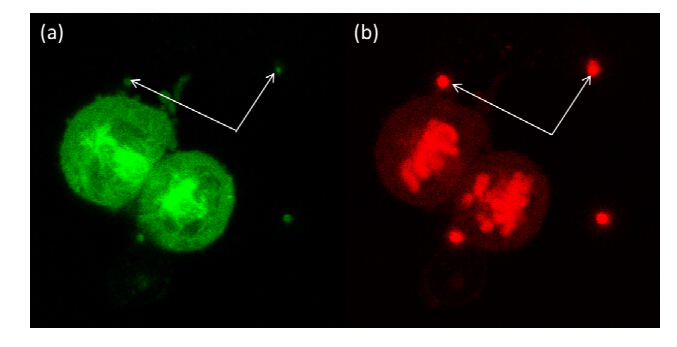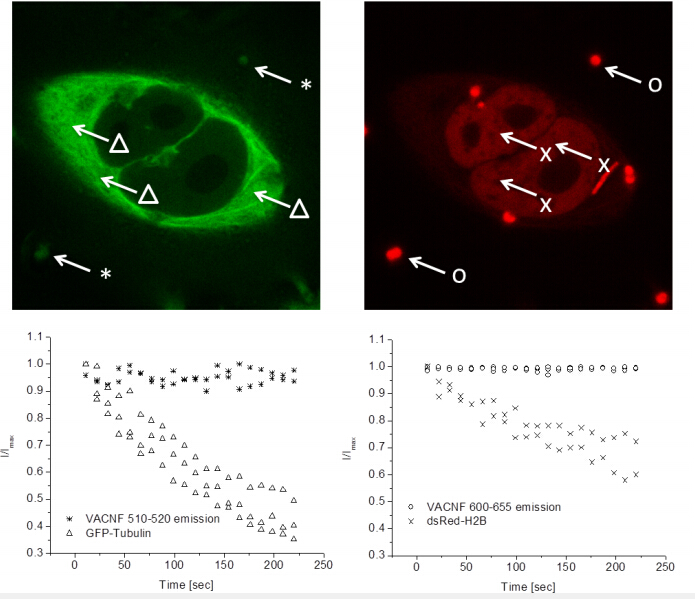|
[1]
|
Z. Zhang, X. Jia, T. Yang, Y. Gu, W. Wang, L. Chen, Multi-objective optimization of lubricant volume in an ELSD considering thermal effects, Int. J. Therm. Sci., 164 (2021), 106884. https://doi.org/10.1016/j.ijthermalsci.2021.106884 doi: 10.1016/j.ijthermalsci.2021.106884

|
|
[2]
|
C. Yu, J. Liu, J. Zhang, K. Xue, S. Zhang, J. Liao, et al., Design and optimization and experimental verification of a segmented double-helix blade roller for straw returning cultivators, J. Chin. Inst. Eng., 44 (2021), 379–387. https://doi.org/10.1080/02533839.2021.1903342 doi: 10.1080/02533839.2021.1903342

|
|
[3]
|
Y. Cao, J. Yao, J. Li, X. Chen, J. Wu, Optimization of microbial oils production from kitchen garbage by response surface methodology, J. Renew. Sustain. Ener., 5 (2013), 053105. https://doi.org/10.1063/1.4821218 doi: 10.1063/1.4821218

|
|
[4]
|
K. Cao, Z. Li, Y. Gu, L. Zhang, L. Chen, The control design of transverse interconnected electronic control air suspension based on seeker optimization algorithm, P. I. Mech. Eng. D-J. Aut., 235 (2021), 2200–2211. https://doi.org/10.1177/0954407020984667 doi: 10.1177/0954407020984667

|
|
[5]
|
G. Wang, H. Yuan, Stability and critical spinning speed of a flexible liquid-filled rotor in thermal environment with nonlinear variable-temperature, Appl. Math. Model., 95 (2021), 143–158. https://doi.org/10.1016/j.apm.2021.01.056 doi: 10.1016/j.apm.2021.01.056

|
|
[6]
|
G. Wang, H. Yuan, Dynamics and stability analysis of an axially functionally graded hollow rotor partially filled with liquid, Compos. Struct., 266 (2021), 113821. https://doi.org/10.1016/j.compstruct.2021.113821 doi: 10.1016/j.compstruct.2021.113821

|
|
[7]
|
G. Wang, W. Yang, H. Yuan, Dynamics and stability analysis of a flexible liquid-filled rotor in a constant thermal environment, J. Vib. Control, 28 (2021), 2913–2924. https://doi.org/10.1177/10775463211022489 doi: 10.1177/10775463211022489

|
|
[8]
|
D. Zhang, N. Zhang, N. Ye, J. Fang, X. Han, Hybrid learning algorithm of radial basis function networks for reliability analysis, IEEE Trans. Reliab., 70 (2021), 887–900. https://doi.org/10.1109/TR.2020.3001232 doi: 10.1109/TR.2020.3001232

|
|
[9]
|
X. Du, H. Xu, F. Zhu, A data mining method for structure design with uncertainty in design variables, Comput. Struct., 244 (2021), 106457. https://doi.org/10.1016/j.compstruc.2020.106457 doi: 10.1016/j.compstruc.2020.106457

|
|
[10]
|
E. Acar, G. Bayrak, Y. Jung, I. Lee, P. Ramu, S. S. Ravichandran, Modeling, analysis and optimization under uncertainties: A review, Struct. Multidiscip. Optimiz., 64 (2021), 2909–2945. https://doi.org/10.1007/s00158-021-03026-7 doi: 10.1007/s00158-021-03026-7

|
|
[11]
|
M. Zimmermann, S. Königs, C. Niemeyer, J. Fender, C. Zeherbauer, R. Vitale, et al., On the design of large systems subject to uncertainty, J. Eng. Design, 28 (2017), 233–254. https://doi.org/10.1080/09544828.2017.1303664 doi: 10.1080/09544828.2017.1303664

|
|
[12]
|
Y. Noh, K. K. Choi, I. Lee, Reduction of ordering effect in reliability-based design optimizatioin using dimension reduction method, AIAA J. 47 (2009), 994–1004. https://doi.org/10.2514/1.40224
|
|
[13]
|
U. Lee, N. Kang, I. Lee, Selection of optimal target reliability in RBDO through reliability-based design for market systems (RBDMS) and application to electric vehicle design, Struct. Multidiscip. Optimiz., 60 (2019), 949–963. https://doi.org/10.1007/s00158-019-02245-3 doi: 10.1007/s00158-019-02245-3

|
|
[14]
|
K. Wang, P. Wang, X. Chen, L. T. Zhao, Multiobjective optimization design of toll plaza, Math. Probl. Eng., 2020 (2020), 2324894. https://doi.org/10.1155/2020/2324894 doi: 10.1155/2020/2324894

|
|
[15]
|
C. Yu, D. Zhu, Y. Gao, K. Xue, S. Zhang, J. Liao, et al., Optimization and experiment of counter-rotating straw returning cultivator based on discrete element method, J. Adv. Mech. Des. Syst., 14 (2020). https://doi.org/10.1299/jamdsm.2020jamdsm0097
|
|
[16]
|
S. Liu, J. Sun, H. Zhou, F. Wei, M. Lu, M. Lei, Experimental and numerical study on fatigue performance for TIG welding and EB welding of RAFM steel plate, Fusion Eng. Des., 146 (2019), 2663–2666. https://doi.org/10.1016/j.fusengdes.2019.04.076 doi: 10.1016/j.fusengdes.2019.04.076

|
|
[17]
|
J. Mendoza, E. Bismut, D. Straub, J. Köhler, Optimal life-cycle mitigation of fatigue failure risk for structural systems, Reliab. Eng. Syst. Safe., 222 (2022), 108390. https://doi.org/10.1016/j.ress.2022.108390 doi: 10.1016/j.ress.2022.108390

|
|
[18]
|
C. A. Castiglioni, R. Pucinotti, Failure criteria and cumulative damage models for steel components under cyclic loading, J. Constr. Steel Res., 65 (2009), 751–765. https://doi.org/10.1016/j.jcsr.2008.12.007 doi: 10.1016/j.jcsr.2008.12.007

|
|
[19]
|
D. M. Harland, R. D. Lorenz, Space systems failures: Disasters and rescues of satellites, rockets and space probes, in Springer Praxis Books, Springer Praxis, 2005. https://doi.org/10.1007/978-0-387-27961-9
|
|
[20]
|
A. D. Kiureghian, O. Ditlevsen, Aleatory or epistemic? Does it matter?, Struct. Safe., 31 (2009), 105–112. https://doi.org/10.1016/j.strusafe.2008.06.020 doi: 10.1016/j.strusafe.2008.06.020

|
|
[21]
|
M. A. Hariri-Ardebili, F. Pourkamali-Anaraki, Structural uncertainty quantification with partial information, Expert Syst. Appl., 198 (2022), 116736. https://doi.org/10.1016/j.eswa.2022.116736 doi: 10.1016/j.eswa.2022.116736

|
|
[22]
|
K. Bowcutt. A perspective on the future of aerospace vehicle design, in 12th AIAA International Space Planes and Hypersonic Systems and Technologies: American Institute of Aeronautics and Astronautics, 2003.
|
|
[23]
|
J. Fang, Y. Gao, G. Sun, Y. Zhang, Q. Li, Crashworthiness design of foam-filled bitubal structures with uncertainty, Int. J. Non-Lin. Mech., 67 (2014), 120–132. https://doi.org/10.1016/j.ijnonlinmec.2014.08.005 doi: 10.1016/j.ijnonlinmec.2014.08.005

|
|
[24]
|
S. A. Latifi Rostami, A. Kolahdooz, J. Zhang, Robust topology optimization under material and loading uncertainties using an evolutionary structural extended finite element method, Eng. Anal. Bound. Elem., 133 (2021), 61–70. https://doi.org/10.1016/j.enganabound.2021.08.023 doi: 10.1016/j.enganabound.2021.08.023

|
|
[25]
|
X. Wang, Z. Meng, B. Yang, C. Cheng, K. Long, J. Li, Reliability-based design optimization of material orientation and structural topology of fiber-reinforced composite structures under load uncertainty, Compos. Struct., 2022 (2022), 115537. https://doi.org/10.1016/j.compstruct.2022.115537 doi: 10.1016/j.compstruct.2022.115537

|
|
[26]
|
M. E. Riley, R. V. Grandhi, Quantification of model-form and predictive uncertainty for multi-physics simulation, Comput. Struct., 89 (2011), 1206–1213. https://doi.org/10.1016/j.compstruc.2010.10.004 doi: 10.1016/j.compstruc.2010.10.004

|
|
[27]
|
B. Do, M. Ohsaki, M. Yamakawa, Bayesian optimization for robust design of steel frames with joint and individual probabilistic constraints, Eng. Struct., 245 (2021), 112859. https://doi.org/10.1016/j.engstruct.2021.112859 doi: 10.1016/j.engstruct.2021.112859

|
|
[28]
|
Z. Meng, Y. Pang, Y. Pu, X. Wang, New hybrid reliability-based topology optimization method combining fuzzy and probabilistic models for handling epistemic and aleatory uncertainties, Comput. Method. Appl. Mech., 363 (2020), 112886. https://doi.org/10.1016/j.cma.2020.112886 doi: 10.1016/j.cma.2020.112886

|
|
[29]
|
C. Yang, H. Ouyang, A novel load-dependent sensor placement method for model updating based on time-dependent reliability optimization considering multi-source uncertainties, Mech. Syst. Signal Proces., 165 (2022), 108386. https://doi.org/10.1016/j.ymssp.2021.108386 doi: 10.1016/j.ymssp.2021.108386

|
|
[30]
|
G. A. da Silva, E. L. Cardoso, A. T. Beck, Comparison of robust, reliability-based and non-probabilistic topology optimization under uncertain loads and stress constraints, Probabilist. Eng. Mech., 59 (2020), 103039. https://doi.org/10.1016/j.probengmech.2020.103039 doi: 10.1016/j.probengmech.2020.103039

|
|
[31]
|
J. M. King, R. V. Grandhi, T. W. Benanzer, Quantification of epistemic uncertainty in re-usable launch vehicle aero-elastic design, Eng. Optimiz., 44 (2012), 489–504. https://doi.org/10.1080/0305215X.2011.588224 doi: 10.1080/0305215X.2011.588224

|
|
[32]
|
Y. C. Tsao, V. V. Thanh, A multi-objective fuzzy robust optimization approach for designing sustainable and reliable power systems under uncertainty, Appl. Soft Comput., 92 (2020), 106317. https://doi.org/10.1016/j.asoc.2020.106317 doi: 10.1016/j.asoc.2020.106317

|
|
[33]
|
L. Wang, B. Ni, X. Wang, Z. Li, Reliability-based topology optimization for heterogeneous composite structures under interval and convex mixed uncertainties, Appl. Math. Model., 99 (2021), 628–652. https://doi.org/10.1016/j.apm.2021.06.014 doi: 10.1016/j.apm.2021.06.014

|
|
[34]
|
L. A. Zadeh, Fuzzy sets as a basis for a theory of possibility, Fuzzy Set. Syst., 1 (1978), 3–28. https://doi.org/10.1016/0165-0114(78)90029-5 doi: 10.1016/0165-0114(78)90029-5

|
|
[35]
|
H. Lü, K. Yang, X. Huang, H. Yin, W. B. Shangguan, D. Yu, An efficient approach for the design optimization of dual uncertain structures involving fuzzy random variables, Comput. Method. Appl. Mech., 371 (2020), 113331. https://doi.org/10.1016/j.cma.2020.113331 doi: 10.1016/j.cma.2020.113331

|
|
[36]
|
R. E. Moore, Methods and Application of Interval Analysis, SIAM: Philadelphia, USA, 1979. https://doi.org/10.1137/1.9781611970906
|
|
[37]
|
S. P. Gurav, J. F. L. Goosen, F. vanKeulen, Bounded-But-Unknown uncertainty optimization using design sensitivities and parallel computing: Application to MEMS, Comput. Struct., 83 (2005), 1134–1149. https://doi.org/10.1016/j.compstruc.2004.11.021 doi: 10.1016/j.compstruc.2004.11.021

|
|
[38]
|
R. Yuan, D. Ma, H. Zhang, Flow characteristics and grain size distribution of granular gangue mineral by compaction treatment, Adv. Mater. Sci. Eng., 2017 (2017), 2509286. https://doi.org/10.1155/2017/2509286 doi: 10.1155/2017/2509286

|
|
[39]
|
G. Sun, T. Pang, J. Fang, G. Li, Q. Li, Parameterization of criss-cross configurations for multiobjective crashworthiness optimization, Int. J. Mech. Sci., 124–125 (2017), 145–157. https://doi.org/10.1016/j.ijmecsci.2017.02.027
|
|
[40]
|
J. Fang, G. Sun, N. Qiu, T. Pang, S. Li, Q. Li, On hierarchical honeycombs under out-of-plane crushing, Int. J. Solids Struct., 135 (2018), 1–13. https://doi.org/10.1016/j.ijsolstr.2017.08.013. doi: 10.1016/j.ijsolstr.2017.08.013

|
|
[41]
|
J. Fu, Q. Liu, K. Liufu, Y. Deng, J. Fang, Q. Li, Design of bionic-bamboo thin-walled structures for energy absorption, Thin-Wall. Struct., 135 (2019), 400–413. https://doi.org/10.1016/j.tws.2018.10.003 doi: 10.1016/j.tws.2018.10.003

|
|
[42]
|
J. Fang, Y. Gao, G. Sun, G. Zheng, Q. Li, Dynamic crashing behavior of new extrudable multi-cell tubes with a functionally graded thickness, Int. J. Mech. Sci., 103 (2015), 63–73. https://doi.org/10.1016/j.ijmecsci.2015.08.029 doi: 10.1016/j.ijmecsci.2015.08.029

|
|
[43]
|
J. Fang, Y. Gao, G. Sun, N. Qiu, Q. Li, On design of multi-cell tubes under axial and oblique impact loads, Thin-Wall. Struct., 95 (2015), 115–126. https://doi.org/10.1016/j.tws.2015.07.002 doi: 10.1016/j.tws.2015.07.002

|
|
[44]
|
J. Fang, G. Sun, N. Qiu, N. H. Kim, Q. Li, On design optimization for structural crashworthiness and its state of the art, Struct. Multidiscip. Optimiz., 55 (2017), 1091–1119. https://doi.org/10.1007/s00158-016-1579-y doi: 10.1007/s00158-016-1579-y

|
|
[45]
|
N. Qiu, Y. Gao, J. Fang, Z. Feng, G. Sun, Q. Li, Crashworthiness analysis and design of multi-cell hexagonal columns under multiple loading cases, Finite Elem. Anal. Des., 104 (2015), 89–101. https://doi.org/10.1016/j.finel.2015.06.004 doi: 10.1016/j.finel.2015.06.004

|
|
[46]
|
S. Kodiyalam, High performance computing for multidisciplinary design optimization and robustness of vehicle structures, in Computational Fluid and Solid Mechanics 2003, Elsevier Science Ltd, (2003), 2305–2307. https://doi.org/10.1016/B978-008044046-0.50566-2
|
|
[47]
|
K. Hamza, K. Saitou, Design Optimization of Vehicle Structures for Crashworthiness Using Equivalent Mechanism Approximations, J. Mech. Des., 127 (2004), 485–492. https://doi.org/10.1115/1.1862680 doi: 10.1115/1.1862680

|
|
[48]
|
X. Gu, G. Sun, G. Li, X. Huang, Y. Li, Q. Li, Multiobjective optimization design for vehicle occupant restraint system under frontal impact, Struct. Multidiscip. Optimiz., 47 (2013), 465–477. https://doi.org/10.1007/s00158-012-0811-7 doi: 10.1007/s00158-012-0811-7

|
|
[49]
|
L. Chen, W. Li, Y. Yang, W. Miao, Evaluation and optimization of vehicle pedal comfort based on biomechanics, Proc. Inst. Mech. Eng. Part D J. Automob. Eng., 234 (2019), 1402–1412. https://doi.org/10.1177/0954407019878355 doi: 10.1177/0954407019878355

|
|
[50]
|
X. L. Zhang, T. Wu, Y. Shao, J. Song, Structure optimization of wheel force transducer based on natural frequency and comprehensive sensitivity, Chin. J. Mech. Eng., 30 (2017), 973–981. https://doi.org/10.1007/s10033-017-0149-6 doi: 10.1007/s10033-017-0149-6

|
|
[51]
|
X. Xu, X. Chen, Z. Liu, Y. Zhang, Y. Xu, J. Fang, et al., A feasible identification method of uncertainty responses for vehicle structures, Struct. Multidiscip. Optimiz., 64 (2021), 3861–3876. https://doi.org/10.1007/s00158-021-03065-0 doi: 10.1007/s00158-021-03065-0

|
|
[52]
|
X. Liu, X. Liu, Z. Zhou, L. Hu, An efficient multi-objective optimization method based on the adaptive approximation model of the radial basis function, Struct. Multidiscip. Optimiz., 63 (2021), 1385–1403. https://doi.org/10.1007/s00158-020-02766-2 doi: 10.1007/s00158-020-02766-2

|
|
[53]
|
J. Fang, Y. Gao, G. Sun, C. Xu, Q. Li, Multiobjective robust design optimization of fatigue life for a truck cab, Reliab. Eng. Syst. Safe., 135 (2015), 1–8. https://doi.org/10.1016/j.ress.2014.10.007 doi: 10.1016/j.ress.2014.10.007

|
|
[54]
|
X. Gu, G. Sun, G. Li, L. Mao, Q. Li, A Comparative study on multiobjective reliable and robust optimization for crashworthiness design of vehicle structure, Struct. Multidiscip. Optimiz., 48 (2013), 669–684. https://doi.org/10.1007/s00158-013-0921-x doi: 10.1007/s00158-013-0921-x

|
|
[55]
|
J. Zhou, F. Lan, J. Chen, F. Lai, Uncertainty optimization design of a vehicle body structure considering random deviations, Automot. Innov., 1 (2018), 342–351. https://doi.org/10.1007/s42154-018-0041-9 doi: 10.1007/s42154-018-0041-9

|
|
[56]
|
J. Zhu, X. Wang, H. Zhang, Y. Li, R. Wang, Z. Qiu, Six sigma robust design optimization for thermal protection system of hypersonic vehicles based on successive response surface method, Chinese J. Aeronaut., 32 (2019), 2095–2108. https://doi.org/10.1016/j.cja.2019.04.009 doi: 10.1016/j.cja.2019.04.009

|
|
[57]
|
X. Wang, L. Shi, A new metamodel method using Gaussian process based bias function for vehicle crashworthiness design, Int. J. Crashworthines., 19 (2014), 311–321. https://doi.org/10.1080/13588265.2014.898932 doi: 10.1080/13588265.2014.898932

|
|
[58]
|
N. Qiu, J. Zhang, F. Yuan, Z. Jin, Y. Zhang, J. Fang, Mechanical performance of triply periodic minimal surface structures with a novel hybrid gradient fabricated by selective laser melting, Eng. Struct., 263 (2022), 114377. https://doi.org/10.1016/j.engstruct.2022.114377 doi: 10.1016/j.engstruct.2022.114377

|
|
[59]
|
L. Chen, P. Ma, J. Tian, X. Liang, Prediction and optimization of lubrication performance for a transfer case based on computational fluid dynamics, Eng. Appl. Comp. Fluid, 13 (2019), 1013–1023. https://doi.org/10.1080/19942060.2019.1663765 doi: 10.1080/19942060.2019.1663765

|
|
[60]
|
X. Xu, Y. Zhang, X. Wang, J. Fang, J. Chen, J. Li, Searching superior crashworthiness performance by constructing variable thickness honeycombs with biomimetic cells, Int. J. Mech. Sci., 235 (2022), 107718. https://doi.org/10.1016/j.ijmecsci.2022.107718 doi: 10.1016/j.ijmecsci.2022.107718

|
|
[61]
|
X. Xu, Y. Zhang, J. Wang, F. Jiang, C. H. Wang, Crashworthiness design of novel hierarchical hexagonal columns, Compos. Struct., 194 (2018), 36–48. https://doi.org/10.1016/j.compstruct.2018.03.099 doi: 10.1016/j.compstruct.2018.03.099

|
|
[62]
|
X. Song, L. Lai, S. Xiao, Y. Tang, M. Song, J. Zhang, et al., Bionic design and multi-objective optimization of thin-walled structures inspired by conchs, Electron. Res. Arch., 31 (2023), 575–598. https://doi.org/10.3934/era.2023028 doi: 10.3934/era.2023028

|
|
[63]
|
J. Fang, Y. Gao, G. Sun, Q. Li, Multiobjective reliability-based optimization for design of a vehicledoor, Finite Elem. Anal. Des., 67 (2013), 13–21. https://doi.org/10.1016/j.finel.2012.11.007 doi: 10.1016/j.finel.2012.11.007

|
|
[64]
|
N. Qiu, Z. Jin, J. Liu, L. Fu, Z. Chen, N. H. Kim, Hybrid multi-objective robust design optimization of a truck cab considering fatigue life, Thin-Wall. Struct., 162 (2021), 107545. https://doi.org/10.1016/j.tws.2021.107545 doi: 10.1016/j.tws.2021.107545

|
|
[65]
|
G. Sun, H. Zhang, J. Fang, G. Li, Q. Li, A new multi-objective discrete robust optimization algorithm for engineering design, Appl. Math. Model., 53 (2018), 602–621. https://doi.org/10.1016/j.apm.2017.08.016 doi: 10.1016/j.apm.2017.08.016

|
|
[66]
|
F. Lei, X. Lv, J. Fang, T. Pang, Q. Li, G. Sun, Injury biomechanics-based nondeterministic optimization of front-end structures for safety in pedestrian-vehicle impact, Thin-Wall. Struct., 167 (2021). https://doi.org/10.1016/j.tws.2021.108087
|
|
[67]
|
H. Lu, D. Yu, Brake squeal reduction of vehicle disc brake system with interval parameters by uncertain optimization, J. Sound Vib., 333 (2014), 7313–7325. https://doi.org/10.1016/j.jsv.2014.08.027 doi: 10.1016/j.jsv.2014.08.027

|
|
[68]
|
J. Wu, Z. Luo, Y. Zhang, N. Zhang, An interval uncertain optimization method for vehicle suspensions using Chebyshev metamodels, Appl. Math. Model., 38 (2014), 3706–3723. https://doi.org/10.1016/j.apm.2014.02.012 doi: 10.1016/j.apm.2014.02.012

|
|
[69]
|
A. Jamali, M. Salehpour, N. Nariman-zadeh, Robust Pareto active suspension design for vehicle vibration model with probabilistic uncertain parameters, Multibody Syst. Dyn., 30 (2013), 265–285. https://doi.org/10.1007/s11044-012-9337-4 doi: 10.1007/s11044-012-9337-4

|
|
[70]
|
X. Gu, W. Wang, L. Xia, P. Jiang, A system optimisation design approach to vehicle structure under frontal impact based on SVR of optimised hybrid kernel function, Int. J. Crashworthines., 26 (2021), 1–15. https://doi.org/10.1080/13588265.2019.1634335 doi: 10.1080/13588265.2019.1634335

|
|
[71]
|
Z. Liu, C. Jiang, Y. Li, Y. Bai, Fatigue life optimization for spot-welded Structures of vehicle body considering uncertainty of welding spots, China Mech. Eng., 26 (2015), 2544–2549. https://doi.org/10.3969/j.issn.1004-132X.2015.18.024 doi: 10.3969/j.issn.1004-132X.2015.18.024

|
|
[72]
|
L. Farkas, D. Moens, S. Donders, D. Vandepitte, Optimisation study of a vehicle bumper subsystem with fuzzy parameters, Mech. Syst. Signal Pr., 32 (2012), 59–68. https://doi.org/10.1016/j.ymssp.2011.11.014 doi: 10.1016/j.ymssp.2011.11.014

|
|
[73]
|
E. Acar, K. Solanki, System reliability based vehicle design for crashworthiness and effects of various uncertainty reduction measures, Struct. Multidiscip. Optimiz., 39 (2009), 311–325. https://doi.org/10.1007/s00158-008-0327-3 doi: 10.1007/s00158-008-0327-3

|
|
[74]
|
Q. Zhao, H. Zhang, Z. Zhu, R. Jiang, L. Yuan, Reliability-based topology optimization for vehicle suspension control arm, Aut. Eng., 40(2018), 313–319. https://doi.org/10.19562/j.chinasae.qcgc.2018.03.011 doi: 10.19562/j.chinasae.qcgc.2018.03.011

|
|
[75]
|
M. Grujicic, G. Arakere, W. C. Bell, H. Marvi, H. V. Yalavarthy, B. Pandurangan, et al., Reliability-based design optimization for durability of ground vehicle suspension system components, J. Mater. Eng. Perform., 19 (2010), 301–313. https://doi.org/10.1007/s11665-009-9482-y doi: 10.1007/s11665-009-9482-y

|
|
[76]
|
M. Rais-Rohani, K. N. Solanki, E. Acar, C. D. Eamon, Shape and sizing optimisation of automotive structures with deterministic and probabilistic design constraints, Int. J. Vehicle Des., 54 (2010), 309–338. https://doi.org/10.1504/IJVD.2010.036839 doi: 10.1504/IJVD.2010.036839

|
|
[77]
|
X. Xu, J. Chen, Z. Lin, Y. Qiao, X. Chen, Y. Zhang, et al., Optimization design for the planetary gear train of an electric vehicle under uncertainties, Actuators, 11 (2022). https://doi.org/10.3390/act11020049
|
|
[78]
|
G. Sun, H. Zhang, R. Wang, X. Lv, Q. Li, Multiobjective reliability-based optimization for crashworthy structures coupled with metal forming process, Struct. Multidiscip. Optimiz., 56 (2017), 1571–1587. https://doi.org/10.1007/s00158-017-1825-y doi: 10.1007/s00158-017-1825-y

|
|
[79]
|
Y. Xu, Y. Gao, C. Wu, J. Fang, Q. Li, Robust topology optimization for multiple fiber-reinforced plastic (FRP) composites under loading uncertainties, Struct. Multidiscip. Optimiz., 59 (2019), 695–711. https://doi.org/10.1007/s00158-018-2175-0 doi: 10.1007/s00158-018-2175-0

|
|
[80]
|
C. van Mierlo, L. Burmberger, M. Daub, F. Duddeck, M. G. R. Faes, D. Moens, Interval methods for lack-of-knowledge uncertainty in crash analysis, Mech. Syst. Signal Proces., 168 (2022). https://doi.org/10.1016/j.ymssp.2021.108574
|
|
[81]
|
C. Lin, F. Gao, Y. Bai, Multiobjective reliability-based design optimisation for front structure of an electric vehicle using hybrid metamodel accuracy improvement strategy-based probabilistic sufficiency factor method, Int. J. Crashworthines., 23 (2018), 290–301. https://doi.org/10.1080/13588265.2017.1317466 doi: 10.1080/13588265.2017.1317466

|
|
[82]
|
F. Y. Li, G. Y. Li, Interval-based uncertain multi-objective optimization design of vehicle crashworthiness, CMC-Comput. Mater. Con., 15 (2010), 199–219. https://doi.org/10.2478/s11533-009-0061-0 doi: 10.2478/s11533-009-0061-0

|
|
[83]
|
J. Li, Y. Fang, Z. Zhan, Y. Jiang, An enhanced surrogate model based vehicle robust design method under materials and manufacturing uncertainties, in ASME International Mechanical Engineering Congress and Exposition, 2016. https://doi.org/10.1115/IMECE2016-67714
|
|
[84]
|
R. J. Yang, L. Gu, C. H. Tho, K. K. Choi, B. Youn, Reliability-based multidisciplinary design optimization of vehicle structures. in 43rd AIAA/ASME/ASCE/AHS/ASC Structures, Structural Dynamics, and Materials Conference, 2002. https://doi.org/10.2514/6.2002-1758
|
|
[85]
|
L. Cao, J. Liu, L. Xie, C. Jiang, R. Bi, Non-probabilistic polygonal convex set model for structural uncertainty quantification, Appl. Math. Model., 89 (2021), 504–518. https://doi.org/10.1016/j.apm.2020.07.025 doi: 10.1016/j.apm.2020.07.025

|
|
[86]
|
X. Meng, J. Liu, L. Cao, Z. Yu, D. Yang, A general frame for uncertainty propagation under multimodally distributed random variables, Comput. Method. Appl. Mech. Eng., 367 (2020). https://doi.org/10.1016/j.cma.2020.113109
|
|
[87]
|
G. Chen, D. Yang, A unified analysis framework of static and dynamic structural reliabilities based on direct probability integral method, Mech. Syst. Signal Proces., 158 (2021). https://doi.org/10.1016/j.ymssp.2021.107783
|
|
[88]
|
X. Y. Long, D. L. Mao, C. Jiang, F. Y. Wei, G. J. Li, Unified uncertainty analysis under probabilistic, evidence, fuzzy and interval uncertainties, Comput. Method. Appl. Mech. Eng., 355 (2019), 1–26. https://doi.org/10.1016/j.cma.2019.05.041
|
|
[89]
|
X. Xu, X. Chen, Z. Liu, J. Yang, Y. Xu, Y. Zhang, et al., Multi-objective reliability-based design optimization for the reducer housing of electric vehicles, Eng. Optimiz., 54 (2022), 1324–1340. https://doi.org/10.1080/0305215X.2021.1923704 doi: 10.1080/0305215X.2021.1923704

|
|
[90]
|
N. Qiu, C. Park, Y. Gao, J. Fang, G. Sun, N. H. Kim, Sensitivity-based parameter calibration and model validation under model error, J. Mech. Des., 140 (2017). https://doi.org/10.1115/1.4038298
|
|
[91]
|
Z. L. Huang, C. Jiang, Y. S. Zhou, Z. Luo, Z. Zhang, An incremental shifting vector approach for reliability-based design optimization, Struct. Multidiscip. Optimiz., 53 (2016), 523–543. https://doi.org/10.1007/s00158-015-1352-7 doi: 10.1007/s00158-015-1352-7

|
|
[92]
|
W. Gao, D. Wu, K. Gao, X. Chen, F. Tin-Loi, Structural reliability analysis with imprecise random and interval fields, Appl. Math. Model., 55 (2018), 49–67. https://doi.org/10.1016/j.apm.2017.10.029 doi: 10.1016/j.apm.2017.10.029

|
|
[93]
|
N. Qiu, Y. Gao, J. Fang, G. Sun, Q. Li, N. H. Kim, Crashworthiness optimization with uncertainty from surrogate model and numerical error, Thin-Wall. Struct., 129 (2018), 457–472. https://doi.org/10.1016/j.tws.2018.05.002 doi: 10.1016/j.tws.2018.05.002

|
|
[94]
|
G. S. Song, M. C. Kim, Theoretical approach for uncertainty quantification in probabilistic safety assessment using sum of lognormal random variables, Nucl. Eng. Technol., 54 (2022), 2084–2093. https://doi.org/10.1016/j.net.2021.12.033 doi: 10.1016/j.net.2021.12.033

|
|
[95]
|
N. A. W. Walton, R. Crowder, N. Satvat, N. R. Brown, V. Sobes, Demonstration of a random sampling approach to uncertainty propagation for generic pebble-bed fluoride-salt-cooled high temperature reactor (gFHR), Nucl. Eng. Des., 395 (2022), 111843. https://doi.org/10.1016/j.nucengdes.2022.111843 doi: 10.1016/j.nucengdes.2022.111843

|
|
[96]
|
X. P. Du, W. Chen, Sequential optimization and reliability assessment method for efficient probabilistic design, J. Mech. Des., 126 (2004), 225–233. https://doi.org/10.1115/1.1649968 doi: 10.1115/1.1649968

|
|
[97]
|
Y. Lei, N. Yang, D. Xia, Probabilistic structural damage detection approaches based on structural dynamic response moments, Smart Struct. Syst., 20 (2017), 207–217. https://doi.org/10.12989/sss.2017.20.2.207 doi: 10.12989/sss.2017.20.2.207

|
|
[98]
|
P. Hoang-Anh, T. Viet-Hung, V. Tien-Chuong, Fuzzy finite element analysis for free vibration response of functionally graded semi-rigid frame structures, Appl. Math. Model., 88 (2020), 852–869. https://doi.org/10.1016/j.apm.2020.07.014 doi: 10.1016/j.apm.2020.07.014

|
|
[99]
|
Z. Chen, Z. Lu, C. Ling, K. Feng, Reliability analysis model of time-dependent multi-mode system under fuzzy uncertainty: Applied to undercarriage structures, Aerosp. Sci. Technol., 120 (2022), 107278. https://doi.org/10.1016/j.ast.2021.107278 doi: 10.1016/j.ast.2021.107278

|
|
[100]
|
P. Wang, H. Zhu, H. Tian, G. Cai, Analytic target cascading with fuzzy uncertainties based on global sensitivity analysis for overall design of launch vehicle powered by hybrid rocket motor, Aerosp. Sci. Technol., 114 (2021), 106680. https://doi.org/10.1016/j.ast.2021.106680 doi: 10.1016/j.ast.2021.106680

|
|
[101]
|
S. Yin, D. Yu, H. Yin, B. Xia, A new evidence-theory-based method for response analysis of acoustic system with epistemic uncertainty by using Jacobi expansion, Comput. Method. Appl. Mech. Eng., 322 (2017), 419–440. https://doi.org/10.1016/j.cma.2017.04.020 doi: 10.1016/j.cma.2017.04.020

|
|
[102]
|
H. Tang, D. Li, J. Li, S. Xue, Epistemic uncertainty quantification in metal fatigue crack growth analysis using evidence theory, Int. J. Fatigue, 99 (2017), 163–174. https://doi.org/10.1016/j.ijfatigue.2017.03.004 doi: 10.1016/j.ijfatigue.2017.03.004

|
|
[103]
|
Z. Zhang, X. X. Ruan, M. F. Duan, C. Jiang, An efficient epistemic uncertainty analysis method using evidence theory, Comput. Method. Appl. Mech. Eng., 339 (2018), 443–466. https://doi.org/10.1016/j.cma.2018.04.033 doi: 10.1016/j.cma.2018.04.033

|
|
[104]
|
X. Tang, K. Yuan, N. Gu, P. Li, R. Peng, An interval quantification-based optimization approach for wind turbine airfoil under uncertainties, Energy, 244 (2022), 122623. https://doi.org/10.1016/j.energy.2021.122623 doi: 10.1016/j.energy.2021.122623

|
|
[105]
|
Z. Niu, H. Zhu, X. Huang, A. Che, S. Fu, S. Meng, et al., Uncertainty quantification method for elastic wave tomography of concrete structure using interval analysis, Measurement, 205 (2022), 112160. https://doi.org/10.1016/j.measurement.2022.112160 doi: 10.1016/j.measurement.2022.112160

|
|
[106]
|
B. Y. Ni, C. Jiang, P. G. Wu, Z. H. Wang, W. Y. Tian, A sequential simulation strategy for response bounds analysis of structures with interval uncertainties, Comput. Struct., 266 (2022), 106785. https://doi.org/10.1016/j.compstruc.2022.106785 doi: 10.1016/j.compstruc.2022.106785

|
|
[107]
|
T. Tang, H. Luo, Y. Song, H. Fang, J. Zhang, Chebyshev inclusion function based interval kinetostatic modeling and parameter sensitivity analysis for Exechon-like parallel kinematic machines with parameter uncertainties, Mech. Mach. Theory, 157 (2021). https://doi.org/10.1016/j.mechmachtheory.2020.104209
|
|
[108]
|
C. Viegas, D. Daney, M. Tavakoli, A. T. de Almeida, Performance analysis and design of parallel kinematic machines using interval analysis, Mech. Mach. Theory, 115 (2017), 218–236. https://doi.org/10.1016/j.mechmachtheory.2017.05.003 doi: 10.1016/j.mechmachtheory.2017.05.003

|
|
[109]
|
M. Ma, L. Wang, Reliability-based topology optimization framework of two-dimensional phononic crystal band-gap structures based on interval series expansion and mapping conversion method, Int. J. Mech. Sci., 196 (2021). https://doi.org/10.1016/j.ijmecsci.2020.106265
|
|
[110]
|
Z. Qiu, X. Li, A new model for the eigenvalue buckling analysis with unknown-but-bounded parameters, Aerosp. Sci. Technol., 113 (2021). https://doi.org/10.1016/j.ast.2021.106634
|
|
[111]
|
B. Xia, H. Lu, D. Yu, C. Jiang, Reliability-based design optimization of structural systems under hybrid probabilistic and interval model, Comput. Struct., 160 (2015), 126–134. https://doi.org/10.1016/j.compstruc.2015.08.009 doi: 10.1016/j.compstruc.2015.08.009

|
|
[112]
|
L. Wang, Z. Chen, G. Yang, Q. Sun, J. Ge, An interval uncertain optimization method using back-propagation neural network differentiation, Comput. Method. Appl. Mech. Eng., 366 (2020). https://doi.org/10.1016/j.cma.2020.113065
|
|
[113]
|
S. H. Chen, L. Ma, G. W. Meng, R. Guo, An efficient method for evaluating the natural frequencies of structures with uncertain-but-bounded parameters, Comput. Struct., 87 (2009), 582–590. https://doi.org/10.1016/j.compstruc.2009.02.009 doi: 10.1016/j.compstruc.2009.02.009

|
|
[114]
|
N. Impollonia, G. Muscolino, Interval analysis of structures with uncertain-but-bounded axial stiffness, Comput. Method. Appl. Mech. Eng., 200 (2011), 1945–1962. https://doi.org/10.1016/j.cma.2010.07.019 doi: 10.1016/j.cma.2010.07.019

|
|
[115]
|
G. Zhao, G. Wen, J. Liu, A novel analysis method for vibration systems under time-varying uncertainties based on interval process model, Probabilistic Eng. Mech., 70 (2022), 103363. https://doi.org/10.1016/j.probengmech.2022.103363 doi: 10.1016/j.probengmech.2022.103363

|
|
[116]
|
L. Wang, J. Liu, C. Yang, D. Wu, A novel interval dynamic reliability computation approach for the risk evaluation of vibration active control systems based on PID controllers, Appl. Math. Model., 92 (2021), 422–446. https://doi.org/10.1016/j.apm.2020.11.007 doi: 10.1016/j.apm.2020.11.007

|
|
[117]
|
W. Gao, D. Wu, C. Song, F. Tin-Loi, X. Li, Hybrid probabilistic interval analysis of bar structures with uncertainty using a mixed perturbation Monte-Carlo method, Finite Elem. Anal. Des., 47 (2011), 643–652. https://doi.org/10.1016/j.finel.2011.01.007 doi: 10.1016/j.finel.2011.01.007

|
|
[118]
|
Z. P. Qiu, X. J. Wang, Solution theorems for the standard eigenvalue problem of structures with uncertain-but-bounded parameters, J. Sound Vib., 282 (2005), 381–399. https://doi.org/10.1016/j.jsv.2004.02.024 doi: 10.1016/j.jsv.2004.02.024

|
|
[119]
|
F. Li, Z. Luo, J. Rong, N. Zhang, Interval multi-objective optimisation of structures using adaptive Kriging approximations, Comput. Struct., 119 (2013), 68–84. https://doi.org/10.1016/j.compstruc.2012.12.028 doi: 10.1016/j.compstruc.2012.12.028

|
|
[120]
|
J. A. Fernandez-Prieto, J. Canada-Bago, M. A. Gadeo-Martos, J. R. Velasco, Optimisation of control parameters for genetic algorithms to test computer networks under realistic traffic loads, Appl. Soft Comput., 12 (2012), 1875–1883. https://doi.org/10.1016/j.asoc.2012.04.018 doi: 10.1016/j.asoc.2012.04.018

|
|
[121]
|
Y. G. Xu, G. R. Li, Z. P. Wu, A novel hybrid genetic algorithm using local optimizer based on heuristic pattern move, Appl. Artif. Intell., 15 (2001), 601–631. https://doi.org/10.1080/088395101750363966 doi: 10.1080/088395101750363966

|
|
[122]
|
C. Jiang, X. Han, G. P. Liu, A sequential nonlinear interval number programming method for uncertain structures, Comput. Meth. Appl. Mech. Eng., 197 (2008), 4250–4265. https://doi.org/10.1016/j.cma.2008.04.027 doi: 10.1016/j.cma.2008.04.027

|
|
[123]
|
J. Cheng, M. Y. Tang, Z. Y. Liu, J. R. Tan, Direct reliability-based design optimization of uncertain structures with interval parameters, J. Zhejiang Univ-Sci. A, 17 (2016), 841–854. https://doi.org/10.1631/jzus.A1600143 doi: 10.1631/jzus.A1600143

|
|
[124]
|
Y. P. Li, G. H. Huang, P. Guo, Z. F. Yang, S. L. Nie, A dual-interval vertex analysis method and its application to environmental decision making under uncertainty, Eur. J. Oper. Res., 200 (2010), 536–550. https://doi.org/10.1016/j.ejor.2009.01.013 doi: 10.1016/j.ejor.2009.01.013

|
|
[125]
|
C. Wang, H. G. Matthies, Non-probabilistic interval process model and method for uncertainty analysis of transient heat transfer problem, Int. J. Therm. Sci., 144 (2019), 147–157. https://doi.org/10.1016/j.ijthermalsci.2019.06.002 doi: 10.1016/j.ijthermalsci.2019.06.002

|
|
[126]
|
S. Nayak, S. Chakraverty, Non-probabilistic approach to investigate uncertain conjugate heat transfer in an imprecisely defined plate, Int. J. Heat Mass Tran., 67 (2013), 445–454. https://doi.org/10.1016/j.ijheatmasstransfer.2013.08.036 doi: 10.1016/j.ijheatmasstransfer.2013.08.036

|
|
[127]
|
Z. Qiu, X. Wang, J. Chen, Exact bounds for the static response set of structures with uncertain-but-bounded parameters, Int. J. Solids Struct., 43 (2006), 6574–6593. https://doi.org/10.1016/j.ijsolstr.2006.01.012 doi: 10.1016/j.ijsolstr.2006.01.012

|
|
[128]
|
Z. Qiu, Y. Xia, H. Yang, The static displacement and the stress analysis of structures with bounded uncertainties using the vertex solution theorem, Comput. Method. Appl. Mech. Eng., 196 (2007), 4965–4984. https://doi.org/10.1016/j.cma.2007.06.022 doi: 10.1016/j.cma.2007.06.022

|
|
[129]
|
Z. P. Qiu, S. H. Chen, I. Elishakoff, Bounds of eigenvalues for structures with an interval description of uncertain-but-non-random parameters, Chaos Solition. Fract., 7 (1996), 425–434. https://doi.org/10.1016/0960-0779(95)00065-8 doi: 10.1016/0960-0779(95)00065-8

|
|
[130]
|
Z. P. Qiu, X. J. Wang, Parameter perturbation method for dynamic responses of structures with uncertain-but-bounded parameters based on interval analysis, Int. J. Solids Struct., 42 (2005), 4958–4970. https://doi.org/10.1016/j.ijsolstr.2005.02.023 doi: 10.1016/j.ijsolstr.2005.02.023

|
|
[131]
|
Z. Qiu, L. Ma, X. Wang, Non-probabilistic interval analysis method for dynamic response analysis of nonlinear systems with uncertainty, J. Sound Vib., 319 (2009), 531–540. https://doi.org/10.1016/j.jsv.2008.06.006 doi: 10.1016/j.jsv.2008.06.006

|
|
[132]
|
D. Meng, T. Xie, P. Wu, C. He, Z. Hu, Z. Lv, An uncertainty-based design optimization strategy with random and interval variables for multidisciplinary engineering systems, Structures, 32 (2021), 997–1004. https://doi.org/10.1016/j.istruc.2021.03.020 doi: 10.1016/j.istruc.2021.03.020

|
|
[133]
|
X. Liu, X. Yu, J. Tong, X. Wang, X. Wang, Mixed uncertainty analysis for dynamic reliability of mechanical structures considering residual strength, Reliab. Eng. Syst. Safe., 209 (2021), 107472. https://doi.org/10.1016/j.ress.2021.107472 doi: 10.1016/j.ress.2021.107472

|
|
[134]
|
J. Wang, Z. Lu, Probabilistic safety model and its efficient solution for structure with random and interval mixed uncertainties, Mech. Mach. Theory, 147 (2020), 103782. https://doi.org/10.1016/j.mechmachtheory.2020.103782 doi: 10.1016/j.mechmachtheory.2020.103782

|
|
[135]
|
D. M. Do, K. Gao, W. Yang, C. Q. Li, Hybrid uncertainty analysis of functionally graded plates via multiple-imprecise-random-field modelling of uncertain material properties, Comput. Method. Appl. Mech. Eng., 368 (2020), 113116. https://doi.org/10.1016/j.cma.2020.113116 doi: 10.1016/j.cma.2020.113116

|
|
[136]
|
J. Wang, Z. Lu, M. Zhong, T. Wang, C. Sun, H. Li, Coupled thermal–structural analysis and multi-objective optimization of a cutting-type energy-absorbing structure for subway vehicles, Thin-Wall. Struct., 141 (2019), 360-373. https://doi.org/10.1016/j.tws.2019.04.026 doi: 10.1016/j.tws.2019.04.026

|
|
[137]
|
M. Luo, Y. Chen, D. Gao, L. Wang, Inversion study of vehicle frontal collision and front bumper collision, Electron. Res. Arch. 31 (2023), 776–792. https://doi.org/10.3934/era.2023039
|
|
[138]
|
W. Li, J. Wang, Z. Du, H. Ma, L. Zhang, L. Duan, Lightweight design method and application of MEWP bracket based on multi-level optimization, Electron. Res. Arch., 30 (2022), 4416–4435. https://doi.org/10.3934/era.2022224 doi: 10.3934/era.2022224

|
|
[139]
|
X. Xu, G. Xu, J. Chen, Z. Liu, X. Chen, Y. Zhang, et al., Multi-objective design optimization using hybrid search algorithms with interval uncertainty for thin-walled structures, Thin-Wall. Struct., 175 (2022), 109218. https://doi.org/10.1016/j.tws.2022.109218 doi: 10.1016/j.tws.2022.109218

|
|
[140]
|
Y. Wu, W. Li, J. Fang, Q. Lan, Multi-objective robust design optimization of fatigue life for a welded box girder, Eng. Optimiz., 50 (2018), 1252–1269. https://doi.org/10.1080/0305215X.2017.1395023 doi: 10.1080/0305215X.2017.1395023

|
|
[141]
|
Y. Wu, L. Sun, P. Yang, J. Fang, W. Li, Energy absorption of additively manufactured functionally bi-graded thickness honeycombs subjected to axial loads, Thin-Wall. Struct., 164 (2021), 107810. https://doi.org/10.1016/j.tws.2021.107810 doi: 10.1016/j.tws.2021.107810

|
|
[142]
|
Y. Su, H. Tang, S. Xue, D. Li, Multi-objective differential evolution for truss design optimization with epistemic uncertainty, Adv. Struct. Eng., 19 (2016), 1403–1419. https://doi.org/10.1177/1369433216643250 doi: 10.1177/1369433216643250

|
|
[143]
|
X. Liu, Q. Fu, N. Ye, L. Yin, The multi-objective reliability-based design optimization for structure based on probability and ellipsoidal convex hybrid model, Struct. Safe., 77 (2019), 48–56. https://doi.org/10.1016/j.strusafe.2018.11.004 doi: 10.1016/j.strusafe.2018.11.004

|
|
[144]
|
T. Vo-Duy, D. Duong-Gia, V. Ho-Huu, T. Nguyen-Thoi, An effective couple method for reliability-based multi-objective optimization of truss structures with static and dynamic constraints, Int. J. Comput. Method., 17 (2020). https://doi.org/10.1142/S0219876219500166
|
|
[145]
|
F. S. Lobato, M. A. da Silva, A. A. Cavalini, V. Steffen, Reliability-based robust multi-objective optimization applied to engineering system design, Eng. Optimiz., 52 (2020), 1–21. https://doi.org/10.1080/0305215X.2019.1577413 doi: 10.1080/0305215X.2019.1577413

|
|
[146]
|
P. Wang, S. Zheng, G. Wu, Multidisciplinary design optimization of vehicle body structure based on collaborative optimization and multi-objective genetic algorithm, Chinese J. Mech. Eng., 47 (2011), 102–108. https://doi.org/10.3901/JME.2011.02.102 doi: 10.3901/JME.2011.02.102

|
|
[147]
|
H. Yin, H. Fang, Y. Xiao, G. Wen, Q. Qing, Multi-objective robust optimization of foam-filled tapered multi-cell thin-walled structures, Struct. Multidiscip. Optimiz., 52 (2015), 1051–1067. https://doi.org/10.1007/s00158-015-1299-8 doi: 10.1007/s00158-015-1299-8

|
|
[148]
|
A. Khakhali, N. Nariman-zadeh, A. Darvizeh, A. Masoumi, B. Notghi, Reliability-based robust multi-objective crashworthiness optimisation of S-shaped box beams with parametric uncertainties, Int. J. Crashworthines., 15 (2010), 443–456. https://doi.org/10.1080/13588261003696458 doi: 10.1080/13588261003696458

|
|
[149]
|
A. U. Ebenuwa, K. F. Tee, Y. Zhang, Fuzzy-based multi-objective design optimization of buried pipelines, Int. J. Uncertain. Fuzz., 29 (2021), 209–229. https://doi.org/10.1142/S0218488521500104 doi: 10.1142/S0218488521500104

|
|
[150]
|
E. Untiedt. A Parametrized Model for Optimization with Mixed Fuzzy and Possibilistic Uncertainty, Springer, Berlin, 2010. https://doi.org/10.1007/978-3-642-13935-2_9
|
|
[151]
|
X. Liu, Z. Zhang, L. Yin, A multi-objective optimization method for uncertain structures based on nonlinear interval number programming method, Mech. Based Des. Struct. Mach., 45 (2017), 25–42. https://doi.org/10.1080/15397734.2016.1141365 doi: 10.1080/15397734.2016.1141365

|
|
[152]
|
T. Xie, Q. Zhou, J. Hu, L. Shu, P. Jiang, A sequential multi-objective robust optimization approach under interval uncertainty based on support vector machines, in 2017 IEEE International Conference on Industrial Engineering and Engineering Management (IEEM), 2017, 2088–2092. https://doi.org/10.1109/IEEM.2017.8290260
|
|
[153]
|
H. Chagraoui, M. Soula, M. Guedri, Robust multi-objective collaborative optimization of complex structures. Adv. Acous. Vib., 5 (2017), 247–258. https://doi.org/10.1007/978-3-319-41459-1_24 doi: 10.1007/978-3-319-41459-1_24

|
|
[154]
|
F. Li, G. Li, G. Sun, Z. Luo, Z. Zhang, Multi-disciplinary optimization for multi-objective uncertainty design of thin walled beams, CMC-Comput. Mater. Con., 19 (2010), 37–56. http://hdl.handle.net/10453/22026
|
|
[155]
|
X. Zhang, W. Sun, J. Huo, X. Ding, Interval multi-objective optimization design based on physical programming, Przeglad Elektrotechiczhy, 88 (2012), 379–381.
|
|
[156]
|
J. Cheng, G. Duan, Z. Liu, X. Li, Y. Feng, X. Chen, Interval multiobjective optimization of structures based on radial basis function, interval analysis, and NSGA-Ⅱ, J. Zhejiang Univ-Sci. A, 15 (2014), 774–788. https://doi.org/10.1631/jzus.A1300311
|
|
[157]
|
X. Feng, J. Wu, Y. Zhang, M. Jiang, Suspension kinematic/compliance uncertain optimization using a chebyshev polynomial approach, SAE Int. J. Mater. Manu., 8 (2015), 257–262. https://doi.org/10.4271/2015-01-0432 doi: 10.4271/2015-01-0432

|
|
[158]
|
X. Li, C. Jiang, X. Han, An uncertainty multi-objective optimization based on interval analysis and its application, China Mech. Eng., 22 (2011), 1100–1106. http://www.cmemo.org.cn/EN/Y2011/V22/I9/1100
|
|
[159]
|
C. Jiang, H. C. Xie, Z. G. Zhang, X. Han, A new interval optimization method considering tolerance design, Eng. Optimiz., 47 (2015), 1637–1650. https://doi.org/10.1080/0305215X.2014.982632 doi: 10.1080/0305215X.2014.982632

|









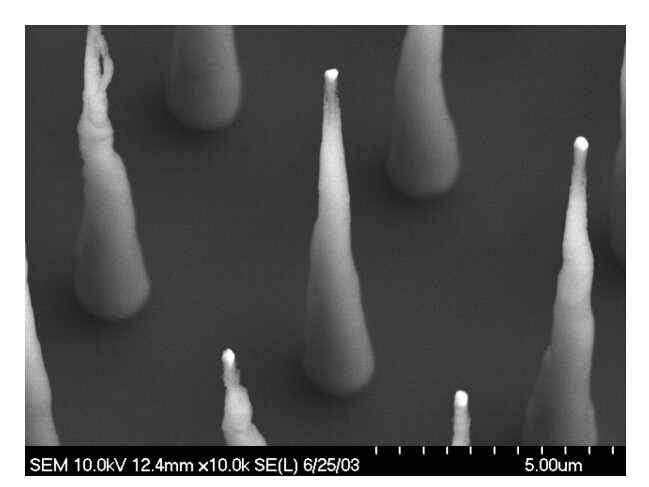
 DownLoad:
DownLoad: 